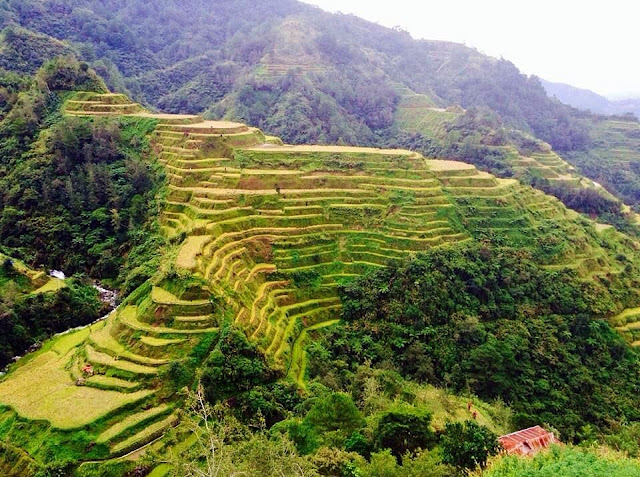Holy Méditerranée: Mt. Carmel, Haifa and Caesarea
The Holy Land: Holy Méditerranée
After spending a few days in Galilee, we headed to the Mediterranean side of Israel to visit Mt. Carmel, Haifa and Caesarea. Mt. Carmel is referenced in the Bible for its beauty, and Caesarea is referenced in the New Testament, so these places are famous stops for Christian pilgrims as well.
MT. CARMEL
We first visited the Carmelite Monastery of Mukhraka, which was at the summit of Mt. Carmel. The drive to the summit was beautiful. The mountain was deep green with oak trees. As we reached the top of the mountain, we entered the monastery grounds and immediately proceeded to the ‘lookout’. We saw a 360 degree view of a variegated landscape. As far as the eye could see, the Jezreel valley and Israel’s farmlands dappled with quilt and a palette of pastel, olive and deep green. In the distance, the places we traveled through earlier like Nazareth, Mt. Tabor, Mt. Gilboa and Samaria rolled and undulated beneath the sweeping sky. According to our guide, Mt. Carmel is referenced in the Bible for its beauty, “It shall bud forth and blossom, and shall rejoice with joy and praise: the glory of Libanus is given to it: the beauty of Carmel, and Saron, they shall see the glory of the Lord, and the beauty of our God.” (Isiah 35:2). It was also referenced in (Song 7:5), “Thy head upon thee is like Carmel.”
MT. CARMEL
We first visited the Carmelite Monastery of Mukhraka, which was at the summit of Mt. Carmel. The drive to the summit was beautiful. The mountain was deep green with oak trees. As we reached the top of the mountain, we entered the monastery grounds and immediately proceeded to the ‘lookout’. We saw a 360 degree view of a variegated landscape. As far as the eye could see, the Jezreel valley and Israel’s farmlands dappled with quilt and a palette of pastel, olive and deep green. In the distance, the places we traveled through earlier like Nazareth, Mt. Tabor, Mt. Gilboa and Samaria rolled and undulated beneath the sweeping sky. According to our guide, Mt. Carmel is referenced in the Bible for its beauty, “It shall bud forth and blossom, and shall rejoice with joy and praise: the glory of Libanus is given to it: the beauty of Carmel, and Saron, they shall see the glory of the Lord, and the beauty of our God.” (Isiah 35:2). It was also referenced in (Song 7:5), “Thy head upon thee is like Carmel.”
I did not pay much attention to the statue of Elijah by the entrance until our returned from the lookout. We gathered around the statue to listen to our guide’s narration about the legendary contest between the prophet Elijah and the pagan god Baal. The valley below Mt. Carmel was the setting for the “contest” in which Elijah, in the presence of King Ahab (the husband of Jezebel) and the people of Israel, challenged the prophets of Baal to show who was the true God and called down fire from heaven to consume his sacrifice (Kings 1:18).
Our guide pointed the Druze village as we came down the mountain. The Druze religion is an offshoot of the Islam faith from about 1000 AD.
HAIFA
We traveled along the slopes of Mt. Carmel overlooking the Mediterranean Sea. We saw some beautiful scenery along the narrow stretch of road between the hillside and the sea. From a Christian pilgrimage perspective, there is not much to connect Haifa to the Bible. But the World Center of the Bahai Faith in Haifa and the panoramic view was well worth the trip. We saw the exterior of the shrine with a golden dome, which was surrounded by colorful gardens – one of the most spectacularly designed gardens I have ever seen. Designed in concentric circles and works of stone, metal, plants, the gardens extend over terraces with fountains, shrubbery, lawn and topiaries. The colorful gardens lead down the slope to the spectacular Hanging Gardens from our vantage point. The beauty of the scenery gave me a spiritual feeling that I thought the whole structure was worthy of inclusion to any pilgrimage, regardless of religious denomination.
The expansive Mediterranean Sea enhanced the panorama behind the shrine. The view of the industrial port was a letdown though.
CAESAREA
The drive from Haifa to Caesarea was very scenic: the Mediterranean Sea on one side and vineyards and plain of Sharon on the other side. As far as the Bible connection, Caesarea was referenced in the New Testament in the book of the Acts of the Apostles: Acts 8:40 - a verse that tells of Philip the Deacon who ministered there, Acts 10 - of Simon Peter who converted Cornelius the Centurion to Christianity, and Acts 15 - of Paul who was imprisoned while waiting to be sent to Rome for trial.
Our guide mentioned about the 'center of wine' in Haifa, but we traveled from Haifa to Caesarea to see the aqueduct by the beach, so he talked about the aqueduct and its history: The first aqueduct was built by Herod, between 4BC to 37BC; the second by was built by the Legions of the Emperor Hadrian; a third smaller aqueduct was built by the Crusaders in the 12th century. Finally, a lower (forth) aqueduct was built during the Byzantine period in order to satisfy the growing needs for fresh water supply to the large city. The forth aqueduct started from a new source of water: the springs at Maagan Michael, several kilometers north to Jiser-E-Zarka, said our guide. Today, Caesarea continues to grow with high-end neighborhoods and boasts world class golf courses, mainly developed by U.S. expats.
Our visit to Mt. Carmel, Haifa and Caesarea was brief, but the spectacular views from the mountain to the sea and the gardens, gave me some solitary moments for reflection that I felt the spiritual part of the journey.







Comments
Post a Comment